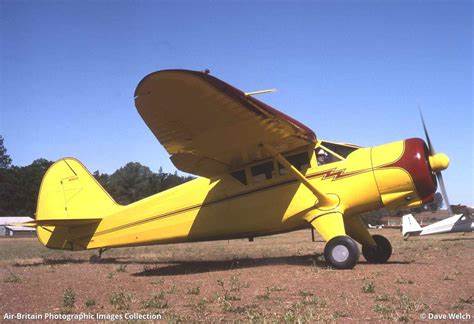Aircraft Information
> Aircraft Make: Stinson. Model: V-77 or AT-19. Nickname: Reliant or “Gullwing”
> Aircraft Mil Civ Description: Airplane SE Piston
> FAA Category and Class: Airplane Single Engine Land
> Engine Description: Single piston (radial)
Aircraft Experience
> As of: 11/4/2024
> Number of Hours Flown: 117
> Number of Times Flown: 106
> Other Aircraft Models Associated: a Million! See Wikipedia for the many model variants of the Gullwing.
First Flown Information
> Sequence First Flown: 78
> Date First Flown: 11/29/1991
> Location First Flown: Alta Mesa Airpark, Wilton, CA. (3CN7)
> Who and/or What Organization First Flown With: John Stoney, Brother and owner of N1943S
Recollections: The Stinson Gullwing is a BIG airplane for its class. I have flown two Gullwings in my life, the first one being my brother John’s 1943 V-77 which I flew 56 times from 1991 until 2002 (with a gap between 1993 and 2002) and, since 2022, an AT-19 with the Commemorative Air Force’s Rainier Squadron, currently based at the Arlington, WA airport.

(c) abpic.co.uk
The MAIN THING about the Gullwing is this: it’s a tough airplane to train in. Why? Because (1) it’s a tailwheel airplane (but, wait, there more!); (2) it’s tailwheel is neither steerable nor lockable, it’s free castoring (so you’re left with ONLY brakes and rudder for directional control…somewhat of an issue when landing and there’s little airflow over the rudder as you slow down) and (3) it only has brakes for the LEFT SEAT PILOT. So, just imagine yourself as an instructor, trying to teach someone how to fly the Gullwing. For sure, you wouldn’t START your tailwheel training in one. But, even with a lot of tailwheel experience, every taildragger can be slightly different (this one, for sure) and it’s just a a tough plane to train in.
My brother John’s approach was to put me in the left seat and hope for the best. I will never forget my first flight, where I had to, several times, judiciously use the brakes. This brake use followed (thankfully closely followed) what a test pilot would call a “directional perturbation”. I had enough awareness to not only make the appropriate brake correction but to sense my brother’s immediate tension, surprise and fear. His eyes got huge. We didn’t have any problems but I thought he had to be the bravest man alive.
Fast forward 30 years and now I’m the Gullwing instructor. Not quite as brave as my brother, I require that pilots demonstrate proficiency in the right seat (which works on landing down to maybe 5-20 knots of groundspeed, depending on how much crosswind there is) before moving to the left seat. We also spend a fair amount of time getting the feel for transitioning to use of brakes without over correcting.

(c) CAF Rainier Squadron
The Gullwing reminds me of a Cadillac from the 1950’s…large, somewhat lumbering but ultimately classic. The engine (a 300 HP Lycoming R680, somewhat undersized for the machine) has–like most radials–a wondeful sound, feel and smell. Oh, and the left pilot’s window (which is made of thick glass) rolls down, just like in the Cadillac.
Leave a Reply